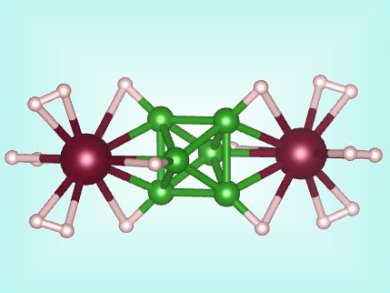A well-known class of negative ions, combined with appropriate metal cations, could lead to effective hydrogen storage materials for automotive applications, according to computational studies carried out by a Swedish/US research team.
Biswarup Pathak and colleagues at Uppsala University, Sweden, the Swedish Royal Institute of Technology and the Virginia Commonwealth University, USA, based their work on the long-known fact that a charged metal ion can trap multiple hydrogen molecules with moderate binding energies. Until now, the problem in realizing such materials has been that metal ions often have a tendency to coalesce and form clusters, thus reducing their effectiveness in trapping enough hydrogen.
“We show that clustering of metal ions can be prevented if they form an integral part of the hydrogen storage material, such as a salt that is composed of a metal cation and a suitable anion”, Pathak says. The researchers chose boranes (boron-hydrogen complexes) and their derivatives as the anions, and alkali and alkaline-earth metals, such as Li, Na, and Mg, as cations. With the help of simple electron-counting rules and rigorous theoretical calculations, they fixed the size and composition of the boranes and demonstrated the ability of their salts to store hydrogen at moderate conditions without clustering of the metal ions.
Image: © Wiley-VCH
- Functionalized Boranes for Hydrogen Storage,
B. Pathak, K. Pradhan, T. Hussain, R. Ahuja, P. Jena,
ChemPhysChem 2012, 13.
DOI: 10.1002/cphc.201100585



